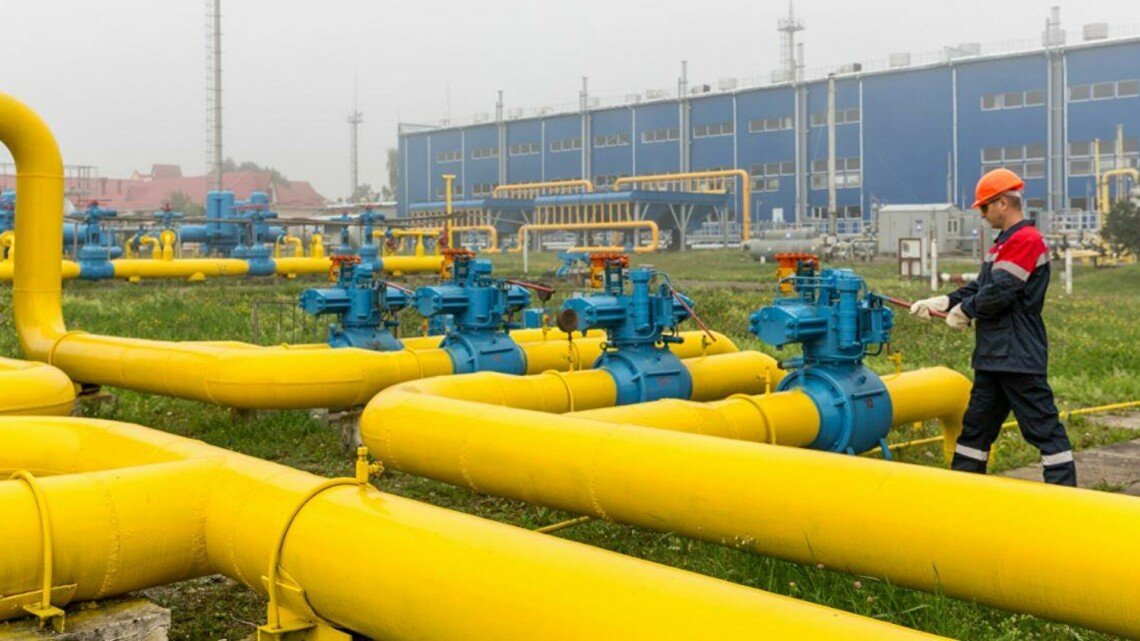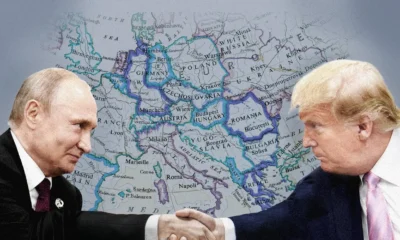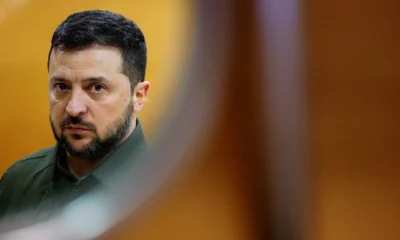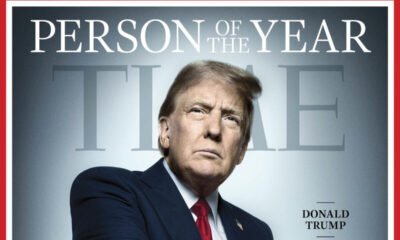Trends
Russia Plays Tough Suspends Gas Deliveries To Austria. What Happens If Europe Loses Russian Gas Via Ukraine?
Published
8 months agoon

It’s been over two years since Russia’s full-scale invasion of Ukraine, yet its gas has kept flowing into Europe. This flow, however, may soon dry up, as Russia recently announced it would suspend gas deliveries to Austria via Ukraine. This marks a significant development in the story of Europe’s energy dependency and Moscow’s geopolitical maneuvers.
Despite Europe’s concerted efforts to wean itself off Russian energy, Russian gas still powers homes, businesses, and industry in parts of the continent. And, crucially, it continues to fuel Kremlin coffers.
Europe’s Energy Dilemma
When the war began in 2022, European leaders were forced to confront their heavy reliance on Russian energy, particularly gas. Back in 2021, about 34% of the EU’s gas came from Russia, with Central and Eastern Europe the most dependent. Germany’s then-Chancellor Olaf Scholz resisted a complete ban on Russian gas, pointing out that Europe’s energy needs couldn’t be secured without it—at least not in the short term.
Russia exploited this vulnerability, slashing gas exports to Europe and raising fears of energy shortages during the winter of 2022. While a crisis was averted, the situation revealed Europe’s precarious position, forcing leaders to scramble for alternatives. Yet, an outright ban on Russian gas was never imposed.
Fast forward to today, and Austria, Hungary, and Slovakia remain heavily reliant on Russian pipeline gas. In fact, Austria imported 98% of its gas from Russia as recently as December 2023. But now, with Russia suspending its gas deliveries to Austria, it questions the future of energy security in Europe.
The End of an Era?
Russia’s gas exports to Europe via Ukraine—a pipeline route dating back to the Soviet era—are nearing their end. Ukraine has announced it will not renew its transit agreement with Gazprom, aiming to deprive Moscow of profits that Kyiv argues directly fund Russia’s war efforts. This decision effectively cuts off one of the Kremlin’s oldest and most significant gas export routes.
Austrian Chancellor Karl Nehammer acknowledged Gazprom’s move wasn’t a surprise, adding that Austria has prepared for this eventuality. Ukrainian Foreign Minister Andrii Sybiha called it another instance of Moscow wielding energy as a weapon, emphasizing that Europe must finally sever its dependency on Russian energy.

What Are the Repercussions?
The immediate impacts might be contained, but the broader implications could be severe.
Economic Pressures on Europe: Central and Eastern European nations like Austria, Hungary, and Slovakia are still highly dependent on Russian gas. If alternative supplies aren’t secured quickly, these nations may face energy shortages, higher costs, and potential disruptions to their economies.
Further Strain on Ukraine: While Kyiv’s decision to terminate the gas transit deal is strategic, it also puts Ukraine in a precarious position. The loss of transit fees—previously a key source of revenue—could add to its financial strain amidst the ongoing war.
Russia’s Leverage Diminishes: By phasing out its gas exports to Europe, Russia is losing one of its most potent tools of influence. However, this could push Moscow to deepen its energy ties with non-European partners, such as China and India.
A More Resilient Europe?: If the EU can withstand this disruption, it could mark a decisive turning point. The bloc has already diversified its energy sources, ramping up LNG imports from the U.S. and investing in renewables. The question is whether these measures can fully compensate for the loss of Russian gas.
How Big Are the Volumes? A Closer Look at Russian Gas Supplies to Europe via Ukraine
Russian gas flows to Europe via Ukraine are just a shadow of what they once were. In 2023, about 15 billion cubic meters (bcm) of gas were transported through this route—only 8% of the peak flows seen in 2018-2019. For context, Russia spent half a century building its gas market dominance in Europe, at one point supplying 35% of Europe’s gas needs. That era has largely come to an end.
Since Russia’s invasion of Ukraine in 2022, its share of the European gas market has been steadily eroded by rivals like Norway, the United States, and Qatar. In response to geopolitical tensions, the European Union took deliberate steps to reduce its dependence on Russian energy.
The result? Gas prices in the EU soared to record highs in 2022 as supplies dwindled, triggering fears of an energy crisis. However, these price spikes are unlikely to recur, according to EU officials and traders. The remaining volumes of Russian gas are modest, and only a few customers still rely on it.
The Ukrainian Route
The Urengoy-Pomary-Uzhgorod pipeline, a legacy of the Soviet era, is one of the few remaining conduits for Russian gas to Europe. It runs from Siberia through Russia’s Kursk region, crossing Ukraine before reaching Slovakia, where it branches out to the Czech Republic and Austria.
–Austria continues to receive the bulk of its gas via Ukraine.
–Hungary sources about two-thirds of its gas imports from Russia.
–Slovakia imports approximately 3 bcm annually, also two-thirds of its needs.
–Czech Republic, which had largely cut off Russian gas in 2023, resumed limited imports in 2024.
Most other routes, including the Yamal-Europe pipeline through Belarus and the Nord Stream pipelines under the Baltic Sea, are no longer operational. The only other active Russian gas routes to Europe are the Blue Stream and TurkStream pipelines, which supply Turkey and a few other European countries.

So why Is the Ukrainian Route Still Functional?
Despite the diminishing volumes, the Ukrainian route remains operational, creating a dilemma for the EU. While countries like France and Germany have publicly committed to cutting off Russian gas, nations such as Austria, Hungary, and Slovakia continue to depend on it. Their argument? Russian gas remains the most cost-effective option, and alternative supplies come with steep transit fees imposed by neighboring EU countries.
Thus, this route is also financially significant – Ukraine earns around $0.8-$1 billion annually in transit fees.
Russia earns over $3 billion annually from sales via Ukraine, even at a relatively modest gas price of $200 per 1,000 cubic meters.
However, the arrangement isn’t sustainable. Gazprom, Russia’s gas export monopoly, recorded its first net loss since 1999, amounting to $7 billion in 2023—underscoring the financial toll of losing access to EU markets.
What Lies Ahead?
The future of the Ukrainian route is uncertain. Ukraine has made it clear it won’t renew its transit agreement with Gazprom. Moscow has expressed a willingness to extend the deal, but Kyiv’s stance remains firm, arguing that any profits from Russian gas sales indirectly fund the war.
Alternative routes, such as TurkStream, are under consideration, but their capacity is limited. Meanwhile, the EU and Ukraine have turned to Azerbaijan to mediate discussions with Russia, though details remain scant.
The Bigger Picture
The diminishing volumes of Russian gas are indicative of a shift in Europe’s energy dynamics. The continent is steadily moving away from its dependence on Russian hydrocarbons, but the transition isn’t without challenges. Nations still reliant on Russian gas face economic hurdles, while Moscow struggles with a shrinking market share and financial losses.
Hence, the Ukrainian gas transit story points to a broader geopolitical and economic reality: Europe and Russia are both entering a new energy paradigm, it remain to be seen how it will play out.
In the words of Ukraine’s Foreign Minister Sybiha, “The era of Europe relying on Russian gas is over.” The real test now is whether Europe can fully sever the ties that bind it to Moscow—while keeping its lights on and its economies running.
You may like
-


Taiwan’s ‘Historic’ TSMC Deal, A Win Or The End Of Its ‘Silicon Shield’ As China Threatens? A Jittery Taiwan Watches Trump’s Moves On Ukraine, Wondering, Could We Be Next?
-


Germany’s Friedrich Merz’s Big Balancing Act—Trump, Borders & Europe’s Future. Can He Deliver?
-


How It’s Not Trump But Vladimir Putin That Europe Is Stinging From: Trump’s U-Turn On Europe, Russia’s Strong Supply Chain—A Formidable Opponent!
-


Is Ukraine Now Stuck In The US-Russia Ecosystem? Could Zelensky Have Made A Deal To Stop The War, Is Trump Right?
-


Is AI Rigging German Elections? The Rise Of AfD, And How Young Voters Are Powering AfD’s Surge On Social Media
-


Why Are Japanese Companies Not Happy With Trump? How Trump 2.0 Is Shaking The World Into A ‘Rude’ Awakening?
